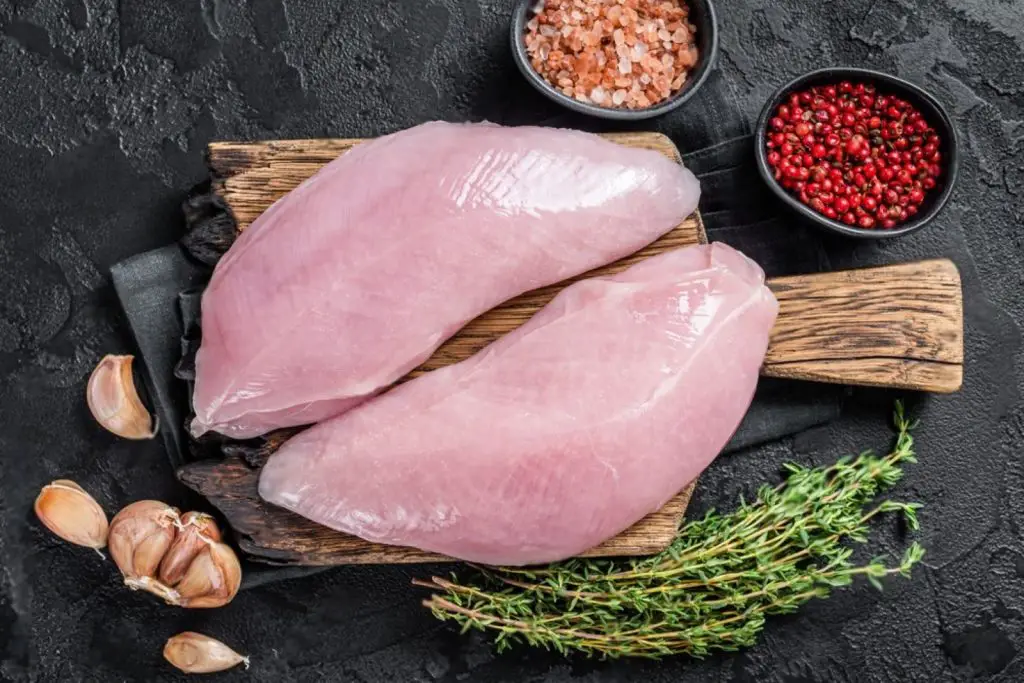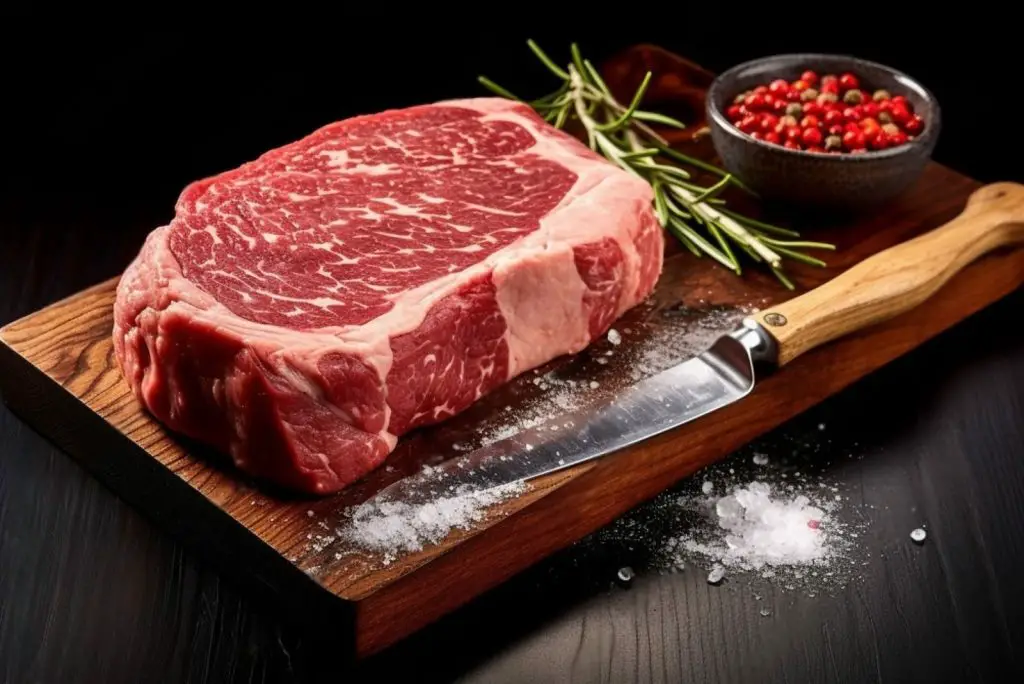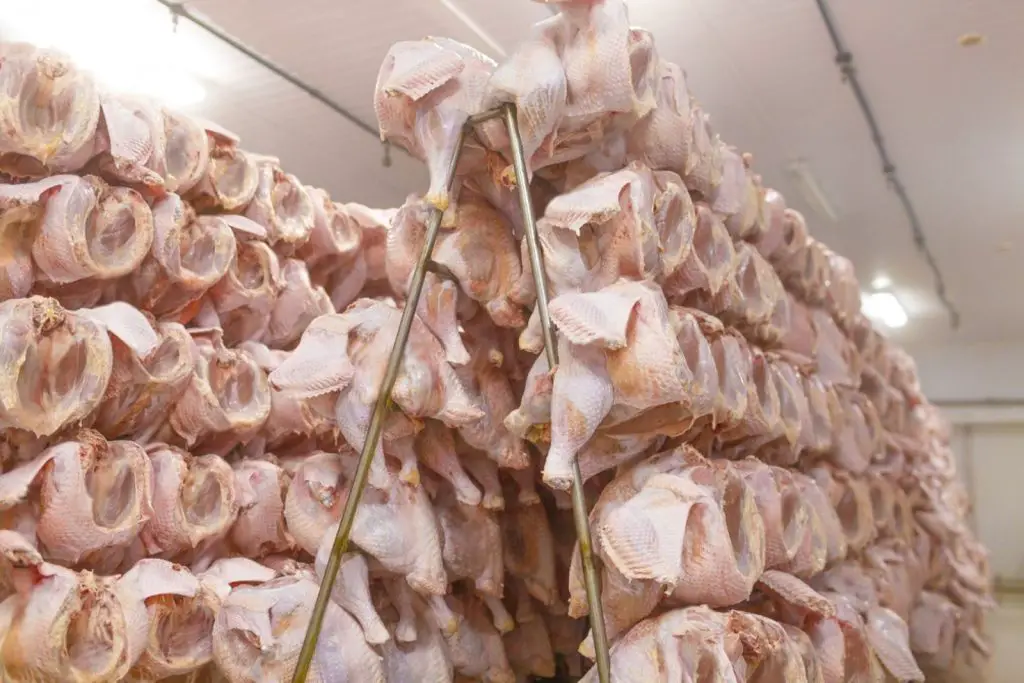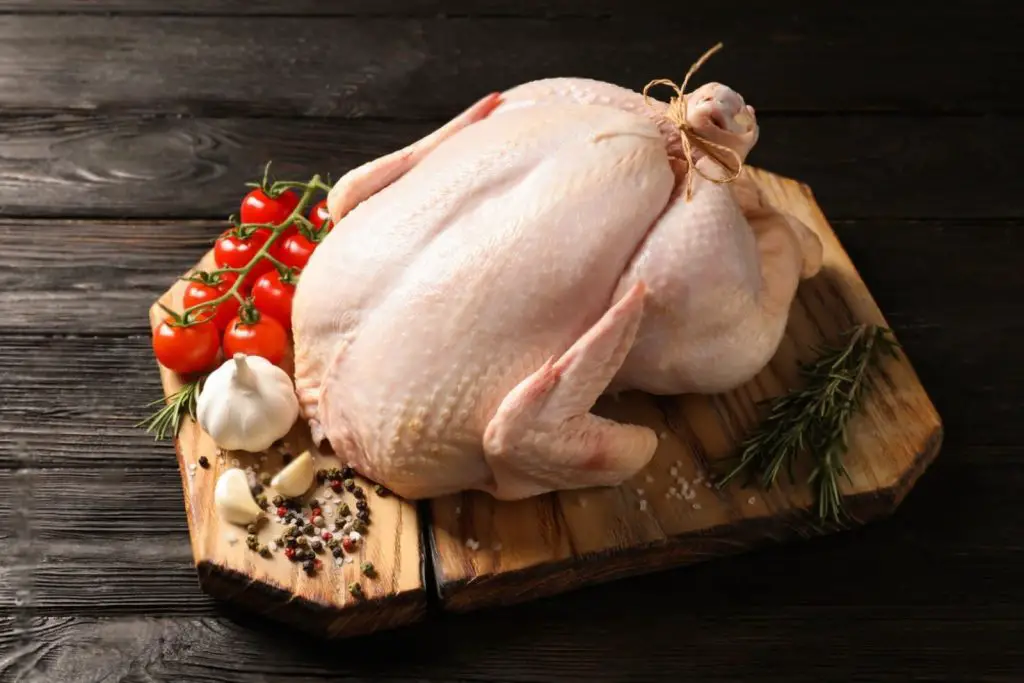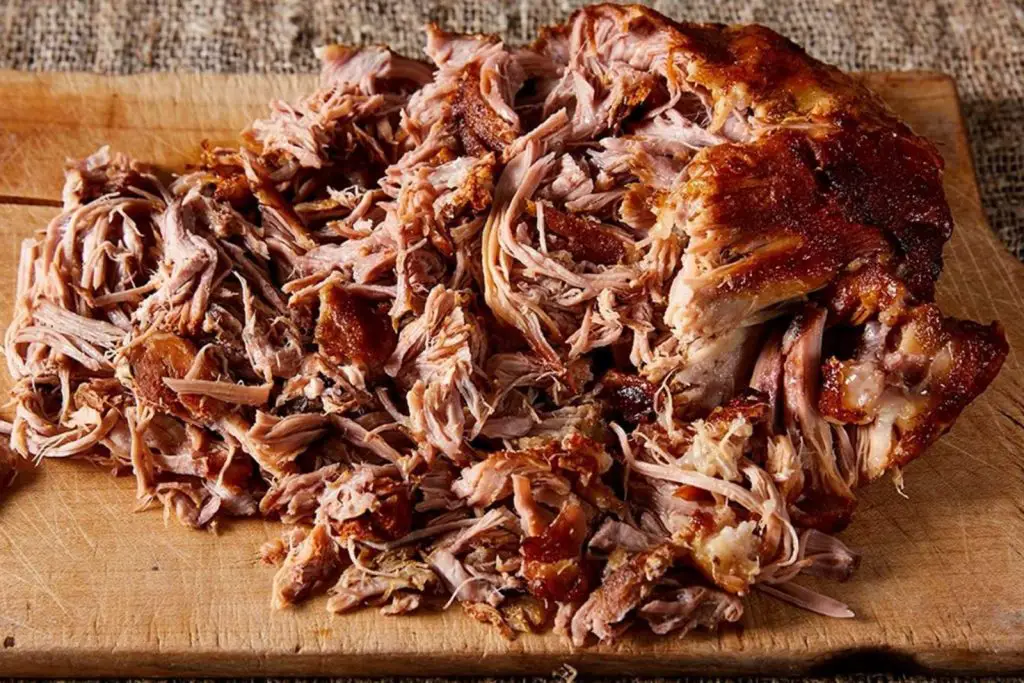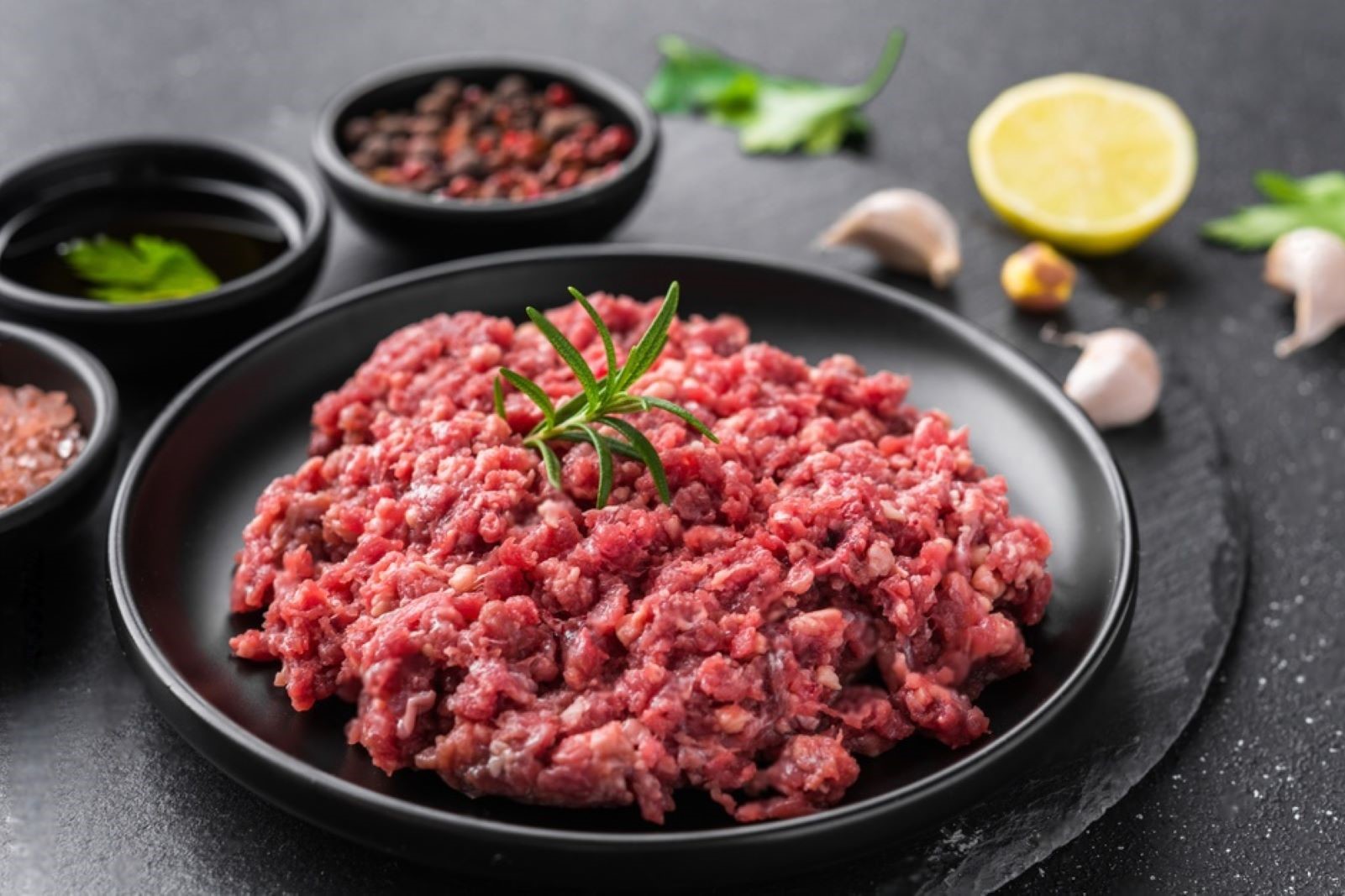
Ground meat, a versatile ingredient used in a wide range of recipes, is a staple in many households. Whether it’s beef, pork, chicken, or turkey, ground meat provides the foundation for numerous delicious dishes such as burgers, meatballs, tacos, and pasta sauces. If you have excess ground meat or want to prepare it in advance for convenient meal prep, freezing is an excellent solution. Freezing ground meat allows you to extend its shelf life while preserving its flavor and texture. In this guide, we will explore the best practices for freezing ground meat, including proper packaging, storage techniques, and thawing instructions, so you can have a stock of this essential ingredient readily available for your culinary endeavors. Join us as we uncover the secrets of freezing ground meat and embrace the convenience of having it on hand, making meal planning and cooking a breeze.
Here are the simple steps to freeze ground meat:
Step 1: Choose Fresh Ground Meat
When it comes to freezing ground meat, the quality of the meat you start with plays a crucial role in maintaining its taste and texture after thawing. It is essential to select fresh ground meat for optimal results.
Freshness is key when choosing ground meat for freezing. Look for ground meat that is well within its expiration date and has not been previously frozen. Avoid using meat that is close to or past its expiration date, as it may already have started to deteriorate in quality.
It is also important to ensure that the ground meat has not been previously frozen. Refreezing meat that has already been frozen and thawed can negatively impact its texture and flavor. Therefore, select ground meat that has been kept refrigerated and has not undergone any freeze-thaw cycles before.
Choosing fresh ground meat sets the foundation for a successful freezing process. It helps to maintain the overall quality and taste of the meat when you eventually defrost and cook it. By starting with fresh meat, you can ensure a more enjoyable culinary experience when using the frozen ground meat in your favorite recipes.
Step 2: Portion and Shape the Ground Meat
After selecting fresh ground meat, the next step in freezing ground meat is to portion and shape it according to your recipe needs. This step allows for convenient thawing and portion control when you’re ready to use the frozen meat.
Start by dividing the ground meat into individual portions based on the amount typically used in your recipes. Consider the serving size or the amount required for a single meal or recipe. This will vary depending on your preferences and the dishes you plan to prepare using the ground meat.
In addition to portioning, shaping the ground meat can also be helpful. You can shape the meat into patties, balls, or flattened portions depending on the recipes you intend to use it in. Shaping the meat can make it easier to handle and thaw later, especially if you plan to cook burgers or meatballs. Uniformly shaped portions also promote even and faster thawing.
When portioning and shaping the ground meat, it’s important to consider the size of your freezer containers or bags. Ensure that the portions fit comfortably within the chosen storage containers without overcrowding or excessive empty space. This allows for efficient use of freezer space and prevents unnecessary wastage.
By portioning and shaping the ground meat before freezing, you create convenient serving sizes and make it easier to thaw and use only the amount needed for each recipe. This step adds practicality and flexibility to your frozen ground meat, enabling you to prepare meals efficiently while minimizing waste.
Step 3: Wrap the Ground Meat
Once you have portioned and shaped the ground meat, the next step in freezing it is to wrap each portion securely. Proper wrapping ensures that the meat stays fresh, prevents air exposure, and reduces the risk of freezer burn.
To wrap the ground meat, you have a couple of options. One option is to tightly wrap each portion individually in plastic wrap. Start by placing the portion of ground meat in the center of a sheet of plastic wrap. Fold the edges of the wrap over the meat and press firmly to eliminate any air pockets. Continue wrapping until the entire portion is tightly sealed.
Another option is to place the portions in freezer-safe bags. These bags are specifically designed to withstand freezing temperatures and prevent air from entering. Place the ground meat portion inside the bag, squeeze out any excess air, and seal it tightly.
Regardless of the wrapping method you choose, make sure that all sides of the ground meat portion are well-sealed to prevent air exposure. Air can lead to freezer burn, which can negatively affect the quality and taste of the meat over time.
By wrapping each portion of ground meat tightly and labeling the packages, you ensure that the meat is protected from air exposure and minimize the risk of freezer burn. These steps contribute to maintaining the quality and flavor of the frozen ground meat, making it easier to use and enjoy when it’s time to defrost and cook.
Step 4: Arrange the Wrapped Portions to Freeze
After wrapping each portion of ground meat, the next step is to arrange them properly for freezing. This step is crucial to ensure that the meat freezes quickly, evenly, and remains in good condition during storage.
Start by placing the wrapped ground meat portions in a single layer on a baking sheet or tray. It’s important to make sure that the portions are not touching each other. Leaving space between them allows for better airflow and promotes quicker freezing. This helps to preserve the quality and texture of the meat.
If you have limited space in your freezer or need to stack the portions, it’s recommended to use a layer of parchment paper or plastic wrap between each portion. This prevents them from sticking together and makes it easier to separate them when you want to use a specific portion later on. It’s crucial to ensure that the layers are not too thick to allow proper airflow and freezing.
By arranging the wrapped ground meat portions in a single layer or with proper spacing, you promote faster and more even freezing. This helps maintain the integrity of the meat and prevents it from forming ice crystals or clumping together. Proper arrangement also facilitates easy storage and retrieval when you need to access a specific portion without disturbing the others.
Step 5: Freeze the Ground Meat
Once you have arranged the wrapped ground meat portions, the next step is to transfer them to the freezer and allow them to freeze. This process, known as flash freezing, helps to maintain the quality of the meat and makes it easier to store and handle.
Carefully transfer the tray of ground meat portions to the freezer, ensuring that it sits on a stable surface. The freezer should be set to the coldest temperature recommended for optimal freezing.
Leave the ground meat portions to freeze for about one to two hours. This initial freezing process is referred to as flash freezing. During this time, the cold temperature rapidly freezes the outer layer of the meat, preventing the portions from sticking together.
Flash freezing is important because it helps to maintain the individual shape and integrity of each portion. By freezing the outer layer first, it creates a protective barrier, reducing the chances of the portions sticking together or forming a solid block. This way, you can easily retrieve individual portions without having to thaw the entire batch.
After one to two hours of flash freezing, the ground meat portions should be solid and firm to the touch. At this stage, they are ready for further storage without the risk of sticking together.
By flash freezing the ground meat portions, you ensure easier storage and retrieval while maintaining the quality of the meat. It allows for individual portions to be easily separated, minimizing waste and providing flexibility in using only the desired amount of ground meat for your recipes.
Step 6: Repackage the Frozen Ground Meat
After the ground meat portions have been flash frozen and are solid to the touch, it’s time to repackage them for long-term storage. This step involves transferring the portions from the initial freezing tray to airtight freezer bags or containers to ensure their freshness and prevent freezer burn.
First, remove the frozen ground meat portions from the tray or baking sheet. Carefully separate them, ensuring they are no longer stuck together. If you used parchment paper or plastic wrap between the portions, remove them as well.
Next, place the individual ground meat portions into airtight freezer bags or containers. Airtight packaging is crucial for preventing air exposure and freezer burn. Freezer-safe bags or containers are designed to withstand freezing temperatures without allowing air to enter.
When placing the portions in freezer bags, squeeze out as much excess air as possible before sealing the bags. This helps to minimize the presence of air, which can lead to freezer burn and deterioration of the meat quality over time.
If you choose to use freezer containers, ensure they have a tight-sealing lid that provides an airtight seal. Press the lid firmly to ensure a secure closure and prevent air from entering.
Finally, don’t forget to label each package with the type of meat and the date of freezing. This information is essential for easy identification and rotation of the frozen ground meat. Use a permanent marker or labels to write the necessary details on each package.
By repackaging the frozen ground meat in airtight freezer bags or containers, you maintain the quality and freshness of the meat while preventing freezer burn. Proper labeling ensures easy identification and helps you keep track of the freezing date, allowing you to use the oldest portions first for better inventory management.
Step 7: Store in the Freezer
Once the ground meat portions have been properly repackaged, the next step is to store them in the freezer. Proper storage ensures that the frozen ground meat maintains its quality and stays safe for consumption over an extended period.
Choose the coldest part of your freezer to store the ground meat packages. The coldest part is usually at the back or bottom of the freezer. This area provides a consistent and low temperature, which helps to preserve the quality of the meat.
It is important to maintain the freezer temperature at or below 0°F (-18°C). This temperature range ensures that the ground meat remains frozen solid and minimizes the risk of bacterial growth. Investing in a freezer thermometer can help you monitor and maintain the desired temperature.
Frozen ground meat can generally be stored for three to four months. However, for optimal flavor and texture, it is recommended to use it within one to two months of freezing. As time passes, the quality of the meat may start to decline, affecting its taste and texture. It’s good practice to label the packages with the date of freezing to keep track of their storage time.
By storing the packaged ground meat in the coldest part of the freezer at or below 0°F (-18°C), you ensure that it remains in optimal condition for an extended period. Following the recommended storage time frame allows you to enjoy the best flavor and texture when using the frozen ground meat in your recipes.
Other related questions
How do you defrost ground meat?
There are three safe methods to defrost ground meat: refrigeration, cold water, and microwave. To defrost in the refrigerator, place the packaged ground meat on a plate and let it thaw slowly in the refrigerator for several hours or overnight. For quicker thawing, submerge the wrapped meat in a leak-proof plastic bag in cold water, changing the water every 30 minutes. Alternatively, use the defrost setting on your microwave, following the manufacturer’s instructions, being careful to cook the meat immediately after thawing.
Can you refreeze ground meat ?
It is generally safe to refreeze ground meat if it has been thawed properly and handled safely. However, the quality of the meat may be compromised after being thawed and refrozen, resulting in potential texture and flavor changes. To maintain the best quality, it is recommended to cook the ground meat after the first thawing and only refreeze it if the cooked meat has been properly cooled and stored promptly.
How do I know if the ground meat has gone bad after being frozen?
To determine if ground meat has gone bad after being frozen, examine its appearance, smell, and texture. If the meat has an off-color, excessive ice crystals, or a slimy texture, it may indicate spoilage. A foul or sour odor is another sign of spoilage. Trust your senses, and if in doubt, it is best to discard the ground meat to avoid the risk of foodborne illness.
Can I freeze ground beef, turkey, or chicken?
Yes, you can freeze ground beef, turkey, or chicken. Start by ensuring the ground meat is fresh and properly packaged. Portion the ground meat into desired serving sizes, wrap tightly in plastic wrap or place in airtight freezer bags, and remove as much air as possible. Label the packages with the date and store them in the freezer. Thaw the frozen ground meat in the refrigerator when ready to use.
Can I freeze seasoned or marinated ground meat?
Yes, you can freeze seasoned or marinated ground meat. However, it’s important to note that the flavor and texture of the meat may be slightly altered after freezing and thawing. To freeze seasoned or marinated ground meat, ensure it is well-coated with the seasoning or marinade, place it in airtight freezer bags or containers, and remove as much air as possible before sealing. Thaw the frozen meat in the refrigerator and cook it thoroughly before consuming to ensure food safety.
Can I freeze ground meat with added breadcrumbs or vegetables?
Yes, you can freeze ground meat with added breadcrumbs or vegetables. However, it is advisable to cook the ground meat mixture before freezing to ensure food safety. After cooking, allow the mixture to cool before portioning and packaging it in airtight containers or freezer bags. Thaw the frozen mixture in the refrigerator and reheat it thoroughly before using it in recipes or consuming it.
Can I freeze ground meat with added spices or herbs?
Yes, you can freeze ground meat with added spices or herbs. It is recommended to cook the ground meat mixture before freezing to ensure food safety. After cooking and allowing it to cool, portion the mixture into desired serving sizes, package it in airtight containers or freezer bags, and remove as much air as possible. Thaw the frozen mixture in the refrigerator and reheat it thoroughly before using it in recipes or consuming it.


